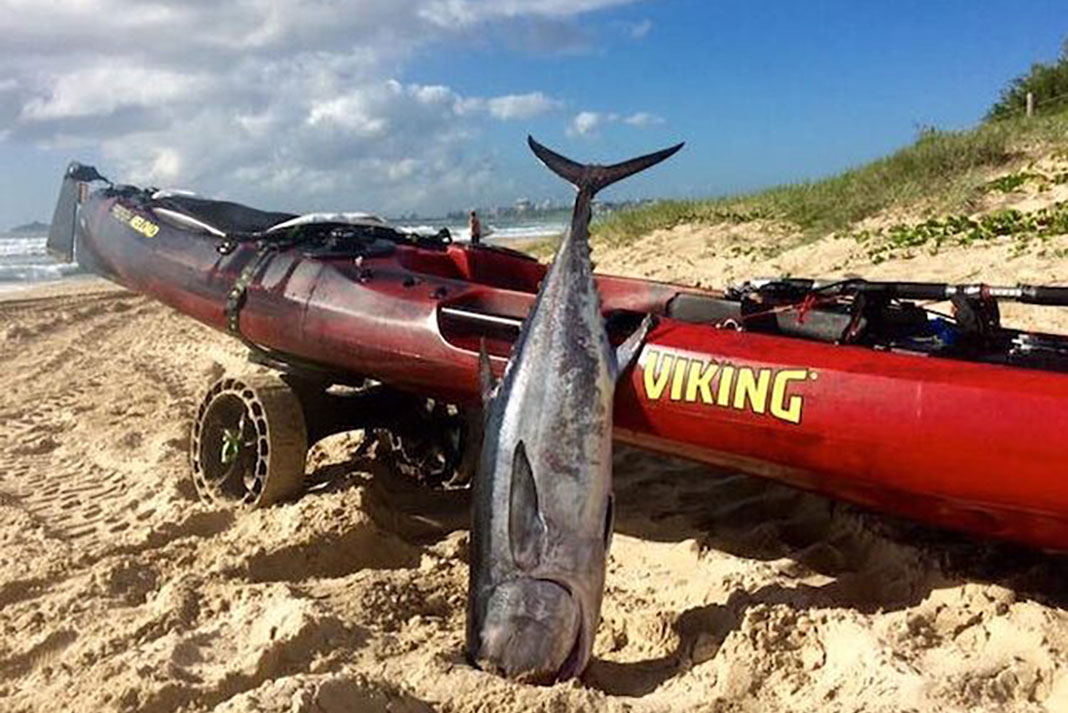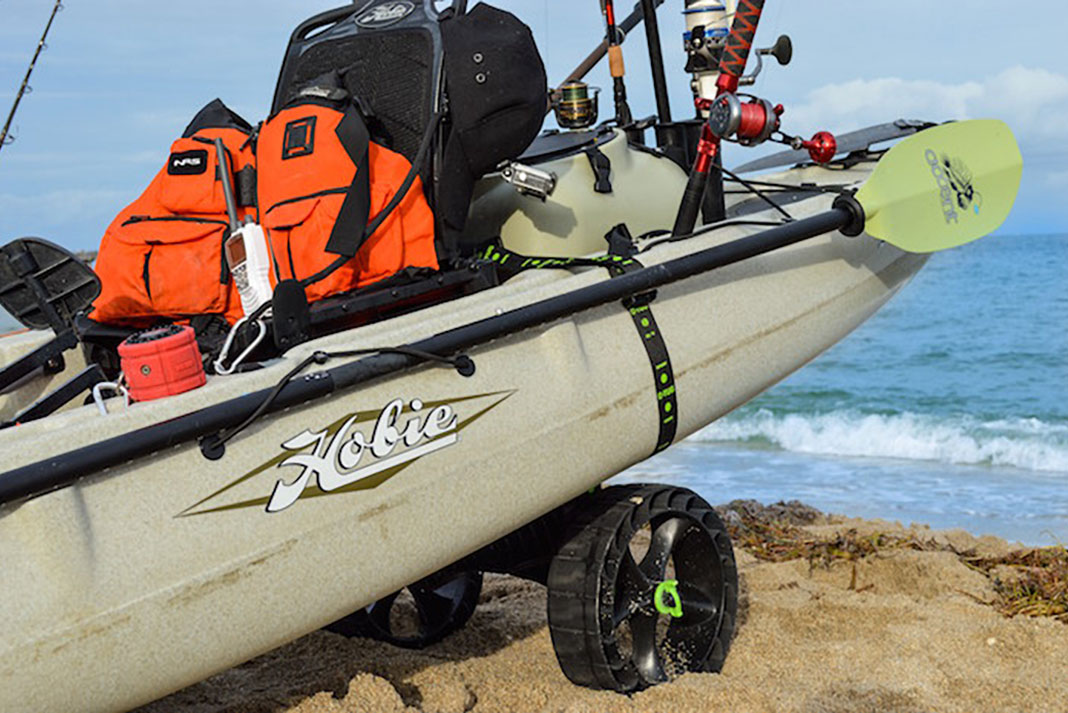Unloading my fishing kayak early in the morning, the view from the parking lot gets me every time. The settled surf, the clear water, and the sandy beaches paint a postcard picture that only magnifies my anticipation for a day of kayak fishing offshore. Then it happens. The beauty of the beach and fishing conditions beyond is masked by the beast of a runway standing between us. Soft sand is a b#$@&.
While the plush dunes are beautiful, the blood, sweat and tears they’ll bring are not. Unless you’re Rocky Balboa racing Apollo down Venice, walking through the unforgiving sand trap is exercise enough. Trudging your kayak loaded down with gear is an unwelcomed workout. Luckily, a good kayak cart combined with these handling tips can help you drop less sweat on the beach and save some energy for the offshore battles ahead of you.

Setup Your Kayak Like a Pro
When setting your kayak on the cart, think about the cart’s design first. The main goal of proper placement is to prevent slipping and sliding. Your feet will be doing enough off-beat dancing in the sand; there is no need for your kayak to be doing the same on the cart. Here are three ways to use placement to stabilize your kayaks ride to the water.
1 Find load bearing attachment points on your kayak to better secure your cart straps. Pad eyes, external mount bases, and seat straps are adequate braces to prevent your cart straps from slipping. When positioning your kayak on the cart, cinch your cart straps in a position that uses these points as braces against a backwards slip.
2If you’re going minimal on the deck rigging, attachment points to use as braces can be hard to find. Instead, consider using the natural bend of the beam to stabilize the ride. If you secure your kayak just before the widest point of the hull and tighten the strap to a snug fit, there’s no room for the kayak to slide backwards.
3As a tertiary option for carts with straps and a primary option for carts with scupper pegs, use your scupper holes. Even for carts that are not typically known for scupper mounting, these openings provide adequate bracing for straps and pegs to keep your kayak steady over the soft dunes. Tread carefully with the scupper holes, they aren’t meant to be the strongest point on your kayak and can ruin a trip by cracking easily.

Keep the Weight Back and Pull
While all kayak carts are different in their width capacities and connection methods, one thing remains the same: your gear, which will likely be the bulk of the weight on the kayak, should be stored toward the stern. While it might not be the place you will store your gear when you reach the water, piling it all in the back for transport sure beats making a second trip.
After that, it’s simple physics. With the cart as your fulcrum, the kayak pivots up and down around your cart. Lifting your kayak at the bow and letting the weight be supported by the lever action of the balanced weight in the stern, a forward trolley is a breeze.
Do Your Research Before Your Buy
Not all carts are created equal, especially when it comes to handling soft sand. On a level playing field (like your driveway) differences in cart performance may seem negligible. However, soft sand is known for devouring sub-par wheels. Often, it’s the unconventional wheel designs that handle the loose terrain best. While they may look silly on the shelf, two of the most notable odd-shaped trolley wheels that are known for their efficiency in soft sand are the oversized, inflatable wheels by WheelEez and the long-track bulldozer design by C-Tug.






